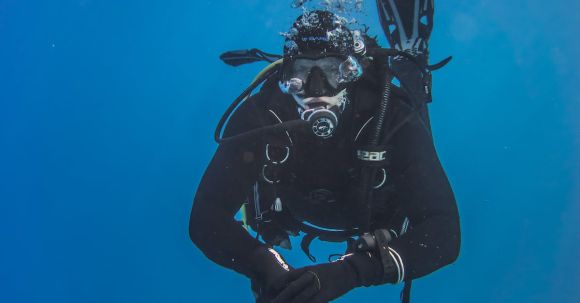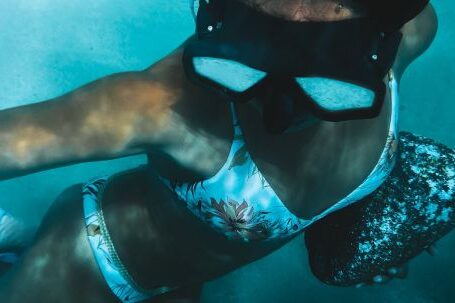Exploring the underwater world is an exhilarating experience that allows us to witness the wonders of marine life. However, communication becomes a challenge when submerged in water. As divers, it is essential to have effective means of communication to ensure safety and maximize the diving experience. In this article, we will discuss various techniques and tools that can enhance your underwater communication skills.
Hand Signals: The Universal Language
Hand signals are the most common and widely used form of underwater communication. They allow divers to convey messages using simple gestures. Learning and using hand signals is crucial for effective communication. Some basic signals include the thumbs-up sign, which indicates everything is okay, and the thumbs-down sign, which means you want to ascend. It is important to familiarize yourself with the standard hand signals before diving with a buddy or a group.
Dive Slates: The Underwater Notepad
Dive slates are small, waterproof boards that allow divers to write messages underwater. These slates are particularly useful in situations where hand signals may not suffice. They can be used to communicate complex messages or to provide information about the dive, such as depth or direction. Dive slates are lightweight and easy to carry, making them a valuable tool for enhancing underwater communication.
Underwater Communication Devices: Talk Through Technology
Advancements in technology have led to the development of underwater communication devices that allow divers to communicate directly with each other. These devices use either ultrasonic or radio waves to transmit messages underwater. Ultrasonic devices are commonly used for short-range communication, while radio waves can transmit messages over longer distances. Underwater communication devices are particularly useful in situations where hand signals or dive slates may not be visible or effective, such as in low visibility or when diving with a large group.
Full Face Masks: Seeing and Speaking
Full face masks are an innovative solution that combines a diving mask with a communication device. These masks cover the entire face, providing a wider field of vision and allowing divers to speak directly into a built-in microphone. The microphone transmits the diver’s voice through an integrated speaker, enabling communication with other divers wearing the same mask or through an underwater communication device. Full face masks not only enhance communication but also provide better comfort and safety by preventing water from entering the mask.
Buddy Systems: Staying Connected
Diving with a buddy is not only a safety measure but also a means of communication. Establishing a buddy system before the dive ensures that you have a reliable partner with whom you can communicate underwater. Before the dive, agree on a set of hand signals or use underwater communication devices to establish a communication plan. Regularly checking in with your buddy during the dive ensures that you are both safe and can communicate effectively.
Practice and Training: Perfecting Your Skills
Enhancing your underwater communication skills requires practice and training. Familiarize yourself with the various techniques and tools mentioned in this article, and practice using them before your dives. Take part in underwater communication courses or workshops to improve your skills further. The more you practice and train, the more confident and proficient you will become in communicating underwater.
In conclusion, effective underwater communication is vital for ensuring safety and maximizing the diving experience. By utilizing techniques such as hand signals, dive slates, underwater communication devices, full face masks, buddy systems, and regular practice, divers can enhance their communication skills and fully enjoy the wonders of the underwater world. So, next time you dive, remember to communicate effectively and dive safely.





